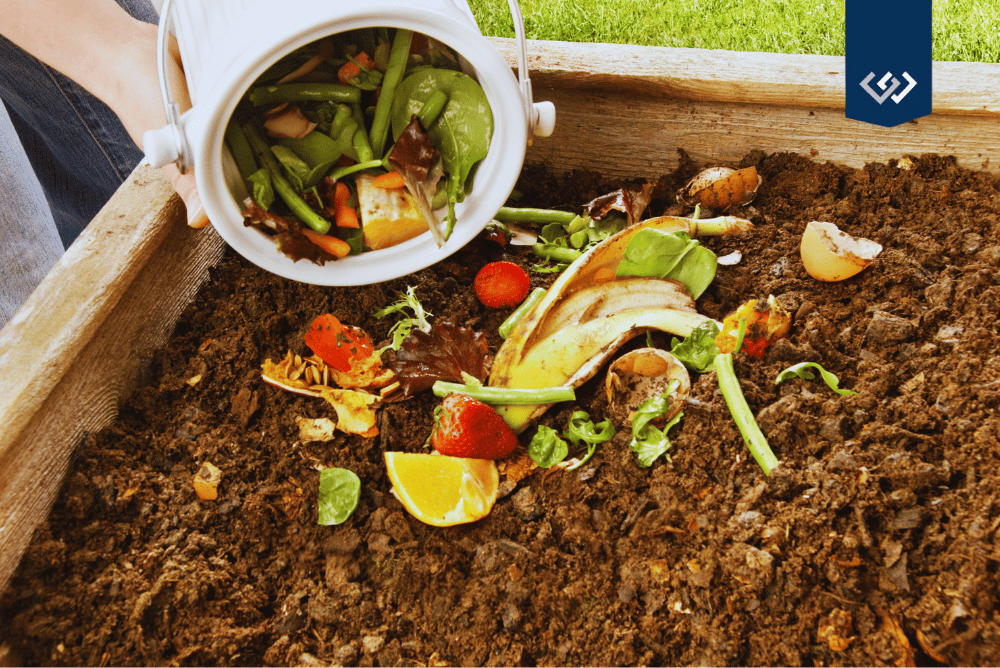Homeowners here in the Pacific Northwest are happily beginning to garden now that it is spring. But it’s important to remember: a good garden begins with good soil. This beginner’s guide to composting includes rules, tips, and helpful information.
Why Compost?
Composting food waste and other suitable items such as cardboard and hay is beneficial for two reasons. According to the EPA, composting lowers greenhouse gas emissions and makes an effective fertilizer.
What is Composting?
Composting is the process of using organisms to break down organic materials. In order to do so effectively, they need the proper amount of air and water, nitrogen emitted from “green” ingredients, and carbon emitted from the “brown” ingredients. An ideal ratio for a compost pile would be three parts brown material to one part green material.
Essential Ingredients
It’s important to remember what can and cannot be included in a compost pile. Check out this comprehensive list of appropriate green ingredients (such as grass clippings and house plants) and brown ingredients (such as dry leaves and untreated wood chips). Always avoid adding any meat, pet waste, or dairy products to your compost pile.
Where to Place Your Compost Pile
When looking at the layout of your backyard and choosing a composting section, take into consideration that the compost will need to be aerated and watered. Options include purchasing a tumbling compost bin, creating a garden heap or even digging a compost trench. You can also learn about various compost pile formations.
Collect Compost Ingredients from the Kitchen
Many homeowners collect and compost kitchen scraps. The easiest way to do this is to place compostable bags in an indoor bin and then transfer them outdoors. Unlike plastic bags, compostable bags are able to break down with the other natural materials in the compost pile. You can find compostable trash bags at local grocery stores or hardware stores.
Create a Composting Routine
Creating a new habit of saving food scraps may appear daunting and smelly at first glance, but these three steps will make it easy for anyone in your household to contribute to your composting efforts.
- Keep a small bin lined with a compostable bag for food scraps near the kitchen sink or garbage can. Instead of throwing the food away or using your garbage disposal, scrape it into the collection bin right at your side.
- Put a compost bag inside your freezer to use for items like banana peels. This will reduce the odor coming from the household compost bin until it can be taken outdoors.
- Take the compostable items out whenever you take the trash out or whenever you’re going to go into your backyard. Much like putting your shoes on when it’s time to go outside, grabbing the compost will become second nature.
Aerate and Water Your Compost
It is essential to keep your compost pile properly moistened and aerated. The moisture level should be at a point that keeps the pile damp, but not heavily saturated. You can aerate it manually by turning the pile over with a pitchfork or garden tool, or by turning the handle of a compost drum.
Wait and Watch
Depending on the style, size, and maintenance of the compost, the pile should be ready to use in the garden in as little as two to three months. This is, of course, dependent on the weather and your area’s climate.
Reap the Benefits
The EPA has identified many benefits of using compost in your garden. Not only does it reduce the need for fertilizers, but it also helps the soil retain its nutrients. We hope this information encourages you to get started so you can give your garden beds a boost and help the environment. Happy composting!
 Facebook
Facebook
 X
X
 Pinterest
Pinterest
 Copy Link
Copy Link
